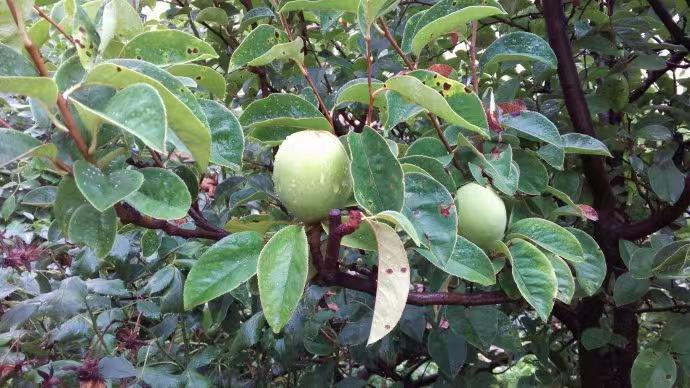
Quince, a fruit once adored by ancient civilizations, has made a resurgence in recent years among culinary enthusiasts and health-conscious individuals alike. Despite its relative obscurity in modern grocery stores, quince is experiencing a revival due to its unique flavor and impressive versatility. Let’s take a closer look at this often-overlooked fruit and discover why it deserves a place in today’s kitchens.
What is Quince?
The quince (Cydonia oblonga) is a small, pear-like fruit that originates from the Mediterranean region. It is a hard, greenish-yellow fruit that turns golden when ripe. Quince is often confused with apples or pears, but it has a distinct tart flavor that makes it more suitable for cooking rather than eating raw. Although it is less common in supermarkets compared to its cousins, quince is making a comeback as a specialty ingredient in many culinary circles.
The Nutritional Benefits of Quince
Not only is quince delicious, but it also boasts several health benefits that make it an attractive addition to a balanced diet. Here are some reasons why you should consider adding quince to your meals:
- Rich in Antioxidants: Quince is packed with antioxidants, which help combat free radicals in the body. These antioxidants support overall health by reducing oxidative stress and preventing damage to cells.
- High in Fiber: The fruit is high in dietary fiber, which aids digestion and promotes gut health. Fiber also helps control blood sugar levels and contributes to heart health.
- Vitamin C Powerhouse: Quince is a great source of Vitamin C, an essential nutrient that boosts the immune system, aids in wound healing, and promotes healthy skin.
- Anti-Inflammatory Properties: Quince contains compounds that have anti-inflammatory effects, which may help in managing conditions like arthritis and reducing general inflammation in the body.

Culinary Uses of Quince
One of the most exciting aspects of quince is its versatility in the kitchen. While the fruit’s raw flesh can be too hard and sour to enjoy on its own, quince shines in cooked and preserved forms. Here are a few ways to incorporate quince into your dishes:
- Quince Paste (Dulce de Membrillo): A popular Spanish delicacy, quince paste is made by cooking quince with sugar and lemon juice until it thickens into a jelly-like consistency. This paste is often paired with cheeses, especially Manchego, for a sweet and savory treat.
- Quince Jelly or Jam: Cooking quince with sugar and lemon juice can also yield a delicious jelly or jam. The natural pectin in quince helps it set beautifully, and the jelly has a lovely, fragrant sweetness that works well on toast, in pastries, or as a filling for cakes.
- Roasted Quince: Roasting quince brings out its natural sweetness and softens the texture. It can be added to roasts, served with meats like lamb or pork, or even tossed into salads for a burst of flavor.
- Quince in Baked Goods: Incorporating quince into baked goods, such as pies, tarts, or cakes, adds a unique tangy flavor. Quince compote can also be used as a topping for ice cream, yogurt, or pancakes.
- Quince in Beverages: Quince is also used to create refreshing beverages, such as quince-infused water, cocktails, or even a quince-flavored syrup that can be mixed into sparkling water or lemonade.
How to Choose and Store Quince
When selecting quince, look for fruit that has a vibrant yellow color and feels firm to the touch. The fragrance of ripe quince is also an excellent indicator of its readiness. Since quince is not typically eaten raw, you may want to allow it to ripen at room temperature for a few days before cooking with it.
To store quince, keep it in a cool, dry place away from direct sunlight. If you have a large quantity, quince can be stored in the refrigerator for a longer shelf life. However, quince is best enjoyed fresh or within a few weeks of purchasing it.

Quince’s Role in Modern Health and Wellness
In today’s world, where people are seeking healthier alternatives and embracing natural foods, quince is becoming a popular choice. Its antioxidant and anti-inflammatory properties make it an appealing option for those looking to improve their overall health. Additionally, quince’s high fiber content supports digestive health and can be a great addition to a weight-loss diet, making it a trendy superfood.
Conclusion: A Fruit Worth Rediscovering
Quince may have fallen out of the spotlight for a while, but it is definitely deserving of a comeback. Whether you enjoy it in a savory dish, a sweet preserve, or as a healthful snack, quince is a versatile fruit with much to offer. It has a rich history of culinary use and health benefits that continue to appeal to modern consumers. So, next time you’re in the market for something new, consider giving quince a try — it might just become your new favorite fruit.